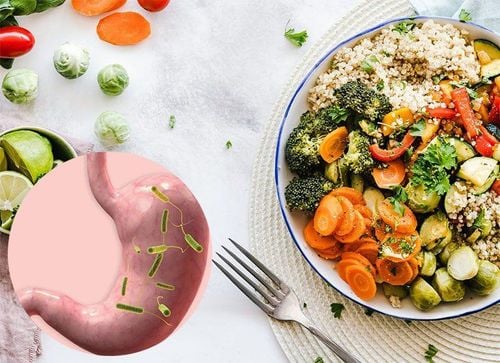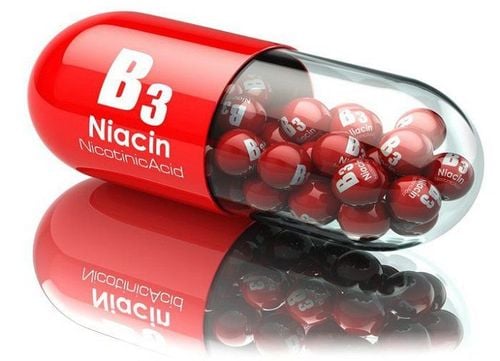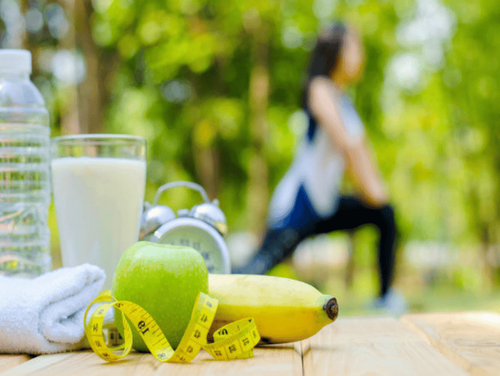This is an automatically translated article.
Crispy fried vegetables are very strange to adults and children, especially children who are picky about vegetables. This dish will bring to the children the delicious, rich flavor of eggs, and other ingredients of this dish. The article will help you learn some more information about this dish.
1. Some information about vegetables used in fried vegetables
1.1. Carrot
Carrots are root vegetables that were first grown in Afghanistan around 900 AD. Orange may be the most famous known color of carrots, but carrots come in other colors, including purple, yellow, red, and white. Carrots are originally purple or yellow. Orange carrots were developed in Central Europe around the 15th or 16th century.
Carrots are high in antioxidants and offer many health benefits. They are rich in beta-carotene - the compound that your body converts into vitamin A, which helps keep your eyes healthy. And beta-carotene helps protect your eyes from the sun and reduces your risk of cataracts and other eye problems. Yellow carrots contain a component of lutein, which is also very good for your eyes. Studies have found that it can help or prevent age-related macular degeneration, the leading cause of vision loss in the United States. Carrots may reduce cancer risk factors. Antioxidants have been shown to fight harmful free radicals in your body and that can make you less likely to get cancer. The two main antioxidant components in carrots include carotenoids and anthocyanins. Carotenoids give carrots their yellow and orange colors, while anthocyanins are responsible for the red and purple colors. Carrots are good for your heart. First, all those antioxidants are good for your heart, too. Second, the potassium in carrots can help control your blood pressure. And third, they have fiber, which can help you stay at a healthy weight and reduce your risk of heart disease.
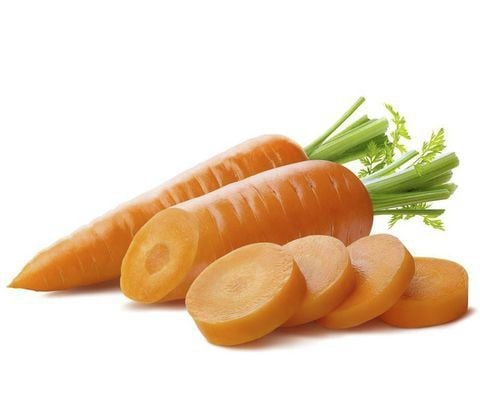
Cà rốt được sử dụng trong món rau chiên
1.2. Potato
Potatoes are generally not considered nutritious. However, this versatile vegetable has some surprising health and nutritional benefits. Although potato chips and potato skins can be high in fat and calories, potatoes themselves are fat and cholesterol free and low in sodium. If potatoes are prepared properly, you can create a delicious, nutritious and healthy dish.
Potatoes are the most commonly consumed root vegetable in the United States. This beloved vegetable is easy to grow and is used in countless dishes year-round around the country.
Potatoes are a good source of fiber, which can help you lose weight by keeping you fuller for longer. Fiber can help prevent heart disease by keeping cholesterol and blood sugar levels under control. Potatoes are also full of disease-preventing antioxidants and vitamins that help the body function properly. In addition, potatoes may provide the following health benefits:
Digestive health: The fiber found in potatoes is a special type known as "resistant starch," which is beneficial for your health. both soluble and insoluble fiber and cause less gas than other types of fiber. You can increase the amount of resistant starch in potatoes by cooking the potatoes a day in advance and letting them cool in the refrigerator overnight. Please reheat them before eating. Like soluble fiber, the resistant starch in potatoes acts as a prebiotic - food for good bacteria in the large intestine that improves gut health. Like insoluble fiber, it can prevent or treat constipation and irritable bowel syndrome.
Disease prevention: Potatoes are high in antioxidants - compounds that fight free radicals that damage your cells. A diet rich in antioxidant-rich fruits and vegetables reduces the risk of heart disease and cancer. To get the most out of potatoes, leave the skin on and choose a colorful variety like purple potatoes. The more colorful the potato, the more antioxidants it contains. In addition, the skin of a potato may contain 12 times more antioxidants than the flesh. So don't be afraid to eat your potato skins. Lowers blood pressure: Baked potato skins are an excellent source of potassium and magnesium. When you don't get enough potassium in your diet, your body keeps extra sodium, and too much sodium raises your blood pressure. A diet rich in potassium can help lower blood pressure, protect the heart, and reduce the risk of stroke.
1.3. Courgettes
Zucchini contains many important vitamins, minerals and antioxidants. Moreover, in the nutritional composition of zucchini contains high fiber content and low calories. Fiber plays an important role in digestion, and when you eat plenty of vegetables such as zucchini, you can limit your chances of getting a host of GI problems. Cancer prevention: Zucchini contains zeaxanthin and several other compounds that may play a role in preventing oxidative stress. Therefore, this may limit the possibility of developing cancer.
Prevention and management of diabetes: Zucchini is rich in vitamin B6. Research shows that this vitamin can help regulate blood sugar levels. The vitamin may even play a protective role against diabetes.
Improves eye health: Compounds like lutein and zeaxanthin protect the cells of the eye by filtering blue light wavelengths. A diet rich in these compounds may reduce your risk of developing cataracts or other eye-related health problems.
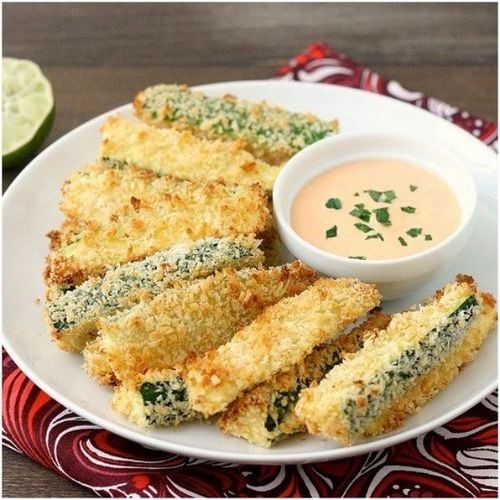
Chiên rau hoặc bí ngòi giúp cải thiện nhiều vấn đề về sức khỏe
2. Fried vegetable dish
Fried vegetables are considered an easy dish to prepare and bring many health benefits.
Ingredients for fried vegetables include:
1 carrot (grated) 1 potato (grated) 1 zucchini (grated) 2 eggs (beaten) 1 tablespoon homemade flour 1 tablespoon parsley (finely chopped) 1 tbsp chives (finely chopped) 1/2 tsp nutmeg (ground) Pepper flavor) 2 tsp olive oil How to make vegetable fry
Mix carrots, potatoes, squash nibs, eggs, flour, parsley, chives, nutmeg and pepper in a bowl. Heat a teaspoon of oil in a non-stick pan and then pour the mixture into the pan one at a time. Start frying the vegetables: Flatten the mixture slightly and cook for 4-5 minutes on each side or until golden brown. Drain on absorbent paper, set aside and keep warm. Heat remaining oil and repeat with remaining mixture. Nutrition facts per serving for this fried vegetable recipe.
Energy: 560kJ Protein: 5g Total Fat: 3g Saturated Fat: 1g Carbohydrate: 24g Total Sugar: 4g Fiber: 4g Sodium: 54mg Calcium: 36mg Iron: 1mg If you have any questions regarding Regarding the topic of nutrition for the body that needs a doctor's advice, you can leave your question in the ASK DOCTOR VINMEC section directly on the hospital website. Your question will be sent to the doctor and you will receive a consultation as soon as possible!
Please dial HOTLINE for more information or register for an appointment HERE. Download MyVinmec app to make appointments faster and to manage your bookings easily.
Reference source: nutritionaustralia.org




